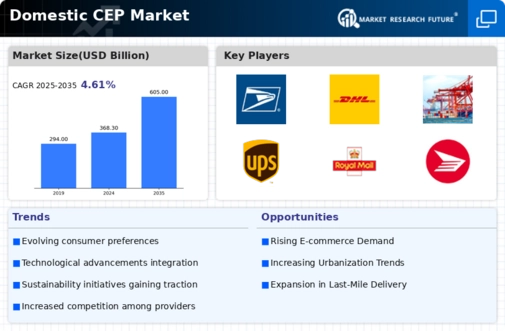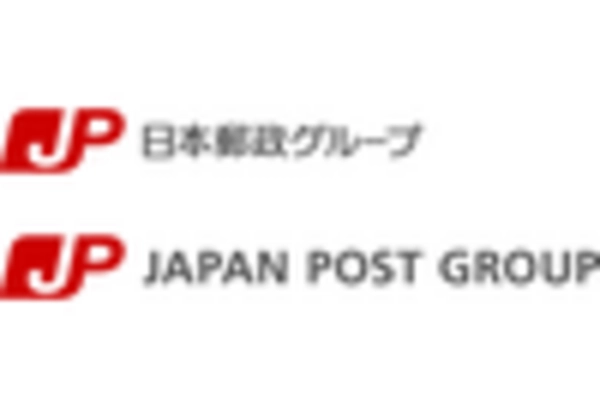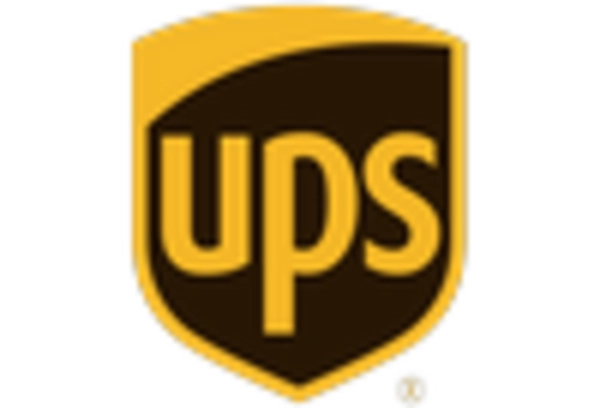E-commerce Growth
The rapid expansion of e-commerce platforms has been a pivotal driver for the Domestic CEP Market. As consumers increasingly prefer online shopping, the demand for efficient and reliable delivery services has surged. In 2025, e-commerce sales are projected to reach unprecedented levels, with estimates suggesting a growth rate of over 15 percent annually. This trend compels CEP providers to enhance their logistics capabilities, ensuring timely deliveries to meet consumer expectations. The Domestic CEP Market must adapt to this evolving landscape, focusing on last-mile delivery solutions that cater to the needs of online shoppers. Furthermore, the integration of advanced tracking systems and customer service enhancements is likely to play a crucial role in maintaining competitiveness within this burgeoning market.
Urbanization Trends
Urbanization continues to reshape the landscape of the Domestic CEP Market. As more individuals migrate to urban centers, the demand for efficient delivery services intensifies. In 2025, urban areas are expected to house over 60 percent of the global population, leading to increased pressure on logistics networks. This demographic shift necessitates innovative solutions to navigate congested city environments, where traditional delivery methods may falter. The Domestic CEP Market is likely to invest in technology-driven approaches, such as drone deliveries and smart routing systems, to enhance operational efficiency. Additionally, the rise of urban micro-fulfillment centers may emerge as a strategic response to meet the growing demand for rapid deliveries in densely populated areas.
Sustainability Concerns
Sustainability has emerged as a critical driver within the Domestic CEP Market. As environmental awareness grows, consumers increasingly favor companies that prioritize eco-friendly practices. In 2025, a significant portion of consumers is expected to choose delivery services based on their sustainability initiatives. This trend compels CEP providers to adopt greener practices, such as utilizing electric vehicles and optimizing delivery routes to reduce carbon footprints. The Domestic CEP Market may also witness a rise in demand for sustainable packaging solutions, reflecting a broader commitment to environmental responsibility. Companies that successfully integrate sustainability into their operations are likely to enhance their brand reputation and attract environmentally conscious consumers, thereby gaining a competitive edge in the market.
Technological Advancements
Technological advancements are fundamentally transforming the Domestic CEP Market. Innovations such as artificial intelligence, machine learning, and automation are reshaping logistics and delivery processes. In 2025, the integration of these technologies is expected to enhance operational efficiency, reduce costs, and improve customer experiences. For instance, AI-driven analytics can optimize route planning, while automated sorting systems can expedite package handling. The Domestic CEP Market is likely to see increased investment in technology to stay competitive and meet evolving consumer demands. Furthermore, the rise of mobile applications for tracking and managing deliveries is enhancing customer engagement, allowing consumers to have greater control over their delivery experiences. As technology continues to evolve, its impact on the Domestic CEP Market will be profound, driving further innovation and efficiency.
Consumer Expectations for Speed
In the Domestic CEP Market, consumer expectations for delivery speed are evolving rapidly. Today's consumers demand not only reliability but also swift delivery options, often expecting packages to arrive within hours of placing an order. This shift in consumer behavior is prompting CEP providers to innovate their service offerings. In 2025, studies indicate that nearly 70 percent of consumers prioritize same-day or next-day delivery options, compelling companies to streamline their operations. The Domestic CEP Market must therefore enhance its logistics frameworks, potentially investing in automation and real-time tracking technologies to meet these heightened expectations. As competition intensifies, the ability to deliver quickly and efficiently may become a defining factor for success in this dynamic market.


















Leave a Comment